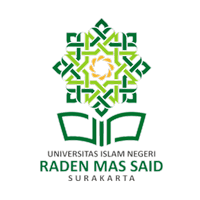Strategi Diplomasi Budaya dalam Pembelajaran BIPA melalui Representasi Nilai Budaya Tradisi Ruwat Rambut Gimbal
Contributors
Muhafid
Dian
Ryan
Keywords
Proceeding
Track
General Track
License
Copyright (c) 2025 International Conference on Cultures & Languages

This work is licensed under a Creative Commons Attribution-NonCommercial-NoDerivatives 4.0 International License.
Abstract
Facing the era of globalization like today, Indonesia's cultural assets are attractiveness and strategic potential in international diplomacy. Indonesia's cultural diplomacy strategy has great potential, and one of its effective instruments is the learning of the Indonesian Language for Foreign Speakers (BIPA) that integrates local traditions, such as Wat Hair Dreadlocks. However, research on the effectiveness of this tradition integration in the context of BIPA as a cultural diplomacy tool is still limited. This study aims to formulate cultural diplomacy strategies that can be applied in BIPA learning through the representation of the cultural value of the Ruwat Hair tradition. This research used a qualitative descriptive approach to analyzing cultural diplomacy strategies in learning BIPA. Data sources used are primary data and secondary data obtained through informants and a literature study from various literature as well as video analysis of the Dreadlocks Hair tradition. Data collection techniques are conducted with document interviews and analysis. To ensure the validity of the data, triangulation of the method is used as a validity technique, namely by comparing information from various different sources of data. The results show that the Ruwat Hair of Dreadlocks has a series of sacred and rich ritual processions of cultural values, like human relations cultural values with God; the cultural value of human relations with nature; the cultural value of human relations with society; the cultural value of human relations with other humans; the cultural value of human relations with itself. This tradition was successfully packed into global attractiveness. By becoming an integral part of Dieng Culture Festival (DCF), this tradition is not only preserving local cultures, but also attracting the attention of tourists who prove that local culture can become a strategic power in promoting Indonesia's positive image, strengthening diplomatic relations, and displaying the wealth of the nation's cultural identity in the international level.

